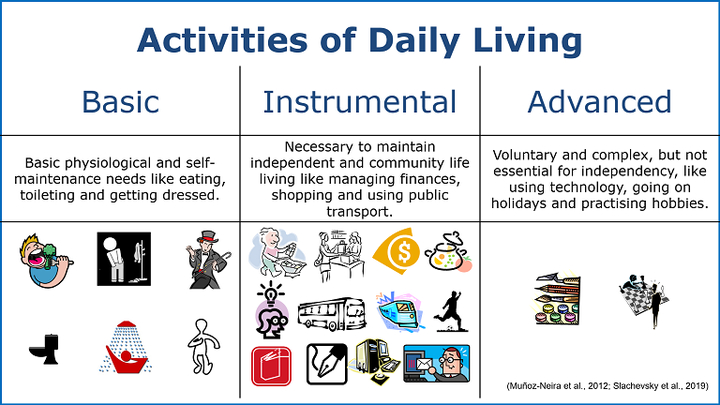The Technology Activities of Daily Living Questionnaire, a version with a technology related subscale

Abstract
Background - Information and communication technology (ICT) has become an increasingly important part of daily life. The ability to use technology is becoming essential for autonomous functioning in society. Current functional scales for patients with cognitive impairment do not evaluate the use of technology. The objective of this study was to develop and validate a new version of the Activities of Daily Living Questionnaire (ADLQ) that incorporates an ICT subscale. Method - A new technology-based subscale was incorporated into the Spanish version of the ADLQ (SV-ADLQ), entitled the Technology version of the ADLQ (T-ADLQ). The T-ADLQ was administered to 63 caregivers of dementia patients, 21 proxies of mild cognitive impairment patients and 44 proxies of normal elderly subjects (mean age of the sample ± SD 73.5 ± 8.30 years). We analysed the convergent validity, internal consistency, reliability cut-off point, sensitivity and specificity of the T-ADLQ. The results of the T-ADLQ were compared to the SV-ADLQ. Results - The T-ADLQ showed significant correlations with the Mini-Mental State Examination (MMSE), the Frontal Assessment Battery (FAB) as well as other measures of functional impairment and dementia severity (MMSE r = –0.70; FAB r = –0.65; Functional Assessment Questionnaire r = 0.77; Instrumental Activities of Daily Living Scale r = –0.75; Clinical Dementia Rating Scale r = 0.72; p < 0.001). The T-ADLQ showed a good reliability with a relatively high Cronbach’s α-coefficient (Cronbach’s α = 0.861). When considering a functional impairment cut-off point greater than 29.25%, the sensitivity and specificity of the T-ADLQ were 82 and 90%, respectively. The area under the receiveroperating characteristic curve was 0.937 for the T-ADLQ and 0.932 for the original version of the test. Conclusions - The T-ADLQ revealed adequate indicators of validity and reliability for the functional assessment of activities of daily living in dementia patients. However, the inclusion of technology items in the T-ADLQ did not improve the performance of the scale, which may reflect the lack of widespread use of technology by elderly individuals. Thus, although it appeared reasonable to add technology use questions to the ADLQ, our experience suggested that this has to be done cautiously, since the sensitivity of these additional items could vary in different populations. The T-ADLQ needs to be validated in a different population of dementia subjects.
